
Rabbit Anti-CTLA4 antibody
CD 152; CD152; CD152 antigen; Celiac disease 3; CELIAC3; CTLA 4; CTLA-4; Cytotoxic T cell associated 4; Cytotoxic T lymphocyte associated 4; Cytotoxic T lymphocyte associated antigen 4; Cytotoxic T lymphocyte associated protein 4; Cytotoxic T lymphocyte a
View History [Clear]
Details
Product Name CTLA4 Chinese Name 细胞毒性T细胞抗原-4(CD152)抗体 Alias CD 152; CD152; CD152 antigen; Celiac disease 3; CELIAC3; CTLA 4; CTLA-4; Cytotoxic T cell associated 4; Cytotoxic T lymphocyte associated 4; Cytotoxic T lymphocyte associated antigen 4; Cytotoxic T lymphocyte associated protein 4; Cytotoxic T lymphocyte associated serine esterase 4; Cytotoxic T lymphocyte protein 4; Cytotoxic T-lymphocyte-associated antigen 4; Cytotoxic T-lymphocyte-associated protein 4; GSE; IDDM12; CD152 isoform; CTLA4_HUMAN; GRD4; ICOS; Ligand and transmembrane spliced cytotoxic T lymphocyte associated antigen 4. literatures Immunogen Species Rabbit Clonality Polyclonal React Species Human, Mouse, Rat, (predicted: Dog, Cow, Rabbit, Sheep, ) Applications WB=1:500-2000 ELISA=1:5000-10000 Flow-Cyt=1μg/Test
not yet tested in other applications.
optimal dilutions/concentrations should be determined by the end user.Theoretical molecular weight 21kDa Cellular localization The cell membrane Form Liquid Concentration 1mg/ml immunogen KLH conjugated synthetic peptide derived from human CTLA-4/CD152: 75-170/223 <Extracellular> Lsotype IgG Purification affinity purified by Protein A Buffer Solution 0.01M TBS(pH7.4) with 1% BSA, 0.03% Proclin300 and 50% Glycerol. Storage Shipped at 4℃. Store at -20 °C for one year. Avoid repeated freeze/thaw cycles. Attention This product as supplied is intended for research use only, not for use in human, therapeutic or diagnostic applications. PubMed PubMed Product Detail This gene is a member of the immunoglobulin superfamily and encodes a protein which transmits an inhibitory signal to T cells. The protein contains a V domain, a transmembrane domain, and a cytoplasmic tail. Alternate transcriptional splice variants, encoding different isoforms, have been characterized. The membrane-bound isoform functions as a homodimer interconnected by a disulfide bond, while the soluble isoform functions as a monomer. Mutations in this gene have been associated with insulin-dependent diabetes mellitus, Graves disease, Hashimoto thyroiditis, celiac disease, systemic lupus erythematosus, thyroid-associated orbitopathy, and other autoimmune diseases.
Function:
Inhibitory receptor acting as a major negative regulator of T-cell responses. The affinity of CTLA4 for its natural B7 family ligands, CD80 and CD86, is considerably stronger than the affinity of their cognate stimulatory coreceptor CD28.
Subunit:
Homodimer; disulfide-linked. Binds to CD80/B7-1 and CD86/B7.2.
Subcellular Location:
Cell membrane; Single-pass type I membrane protein. Note=Exists primarily an intracellular antigen whose surface expression is tightly regulated by restricted trafficking to the cell surface and rapid internalisation.
Tissue Specificity:
Widely expressed with highest levels in lymphoid tissues. Detected in activated T-cells where expression levels are 30- to 50-fold less than CD28, the stimulatory coreceptor, on the cell surface following activation.
Post-translational modifications:
N-glycosylation is important for dimerization.
Phosphorylation at Tyr-201 prevents binding to the AP-2 adapter complex, blocks endocytosis, and leads to retention of CTLA4 on the cell surface.
DISEASE:
Genetic variation in CTLA4 influences susceptibility to systemic lupus erythematosus (SLE) [MIM:152700]. SLE is a chronic, inflammatory and often febrile multisystemic disorder of connective tissue. It affects principally the skin, joints, kidneys and serosal membranes. SLE is thought to represent a failure of the regulatory mechanisms of the autoimmune system.
Note=Genetic variations in CTLA4 may influence susceptibility to Graves disease, an autoimmune disorder associated with overactivity of the thyroid gland and hyperthyroidism.
Genetic variation in CTLA4 is the cause of susceptibility to diabetes mellitus insulin-dependent type 12 (IDDM12) [MIM:601388]. A multifactorial disorder of glucose homeostasis that is characterized by susceptibility to ketoacidosis in the absence of insulin therapy. Clinical fetaures are polydipsia, polyphagia and polyuria which result from hyperglycemia-induced osmotic diuresis and secondary thirst. These derangements result in long-term complications that affect the eyes, kidneys, nerves, and blood vessels.
Similarity:
Contains 1 Ig-like V-type (immunoglobulin-like) domain.
SWISS:
P16410
Gene ID:
1493
Database links:Entrez Gene: 1493 Human
Entrez Gene: 100505288 Mouse
Entrez Gene: 12477 Mouse
Omim: 123890 Human
SwissProt: P16410 Human
SwissProt: P09793 Mouse
Unigene: 247824 Human
Unigene: 390 Mouse
Unigene: 10259 Rat
Product Picture
Liver(Rat) Cell Lysate at 30 ug
Primary: Anti-CTLA4 (SL10006R) at 1/300 dilution
Secondary: IRDye800CW Goat Anti-Rabbit IgG at 1/20000 dilution
Predicted band size: 21 kD
Observed band size: 35 kD
Sample:
Liver(Mouse) Cell Lysate at 30 ug
Primary: Anti-CTLA4 (SL10006R) at 1/300 dilution
Secondary: IRDye800CW Goat Anti-Rabbit IgG at 1/20000 dilution
Predicted band size: 21 kD
Observed band size: 35 kD
Sample:
A549(Human) Cell Lysate at 30 ug
Primary: Anti-CTLA4 (SL10006R) at 1/300 dilution
Secondary: IRDye800CW Goat Anti-Rabbit IgG at 1/20000 dilution
Predicted band size: 21 kD
Observed band size: 35 kD
Blank control(blue): Molt-4 Cells(fixed with 2% paraformaldehyde (10 min) ).
Primary Antibody: Rabbit Anti-CTLA4/FITC Conjugated antibody (SL10006R/FITC), Dilution: 1μg in 100 μL 1X PBS containing 0.5% BSA;
Isotype Control Antibody: Rabbit IgG/FITC orange) ,used under the same conditions.
Blank control(blue):Mouse Spleen Cells(fixed with 2% paraformaldehyde (10 min)).
Primary Antibody: Rabbit Anti- Phospho-c-Fos (Thr325)/FITC Conjugated antibody (SL10006R /FITC), Dilution: 1μg in 100 μL 1X PBS containing 0.5% BSA;
Isotype Control Antibody: Rabbit IgG/FITC(orange) ,used under the same conditions.
Blank control: Hela(blue), the cells were fixed with 2% paraformaldehyde (10 min)
Isotype Control Antibody: Rabbit IgG(orange) ; Secondary Antibody: Goat anti-rabbit IgG-PE (white blue), Dilution: 1:200 in 1 X PBS containing 0.5% BSA ; Primary Antibody Dilution: 1μg in 100 μL1X PBS containing 0.5% BSA(green).Blank control: Raji(blue).
Primary Antibody: Rabbit Anti-CTLA4 antibody(SL10006R), Dilution: 5μg in 100 μL 1X PBS containing 0.5% BSA;
Isotype Control Antibody: Rabbit IgG (orange) ,used under the same conditions.
Secondary Antibody: Goat anti-rabbit IgG-PE(white blue), Dilution: 1:200 in 1 X PBS containing 0.5% BSA.
Bought notes(bought amounts latest0)
No one bought this product
User Comment(Total0User Comment Num)
- No comment
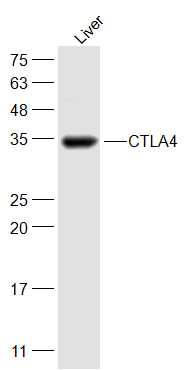
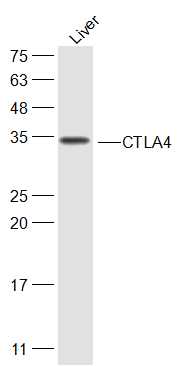
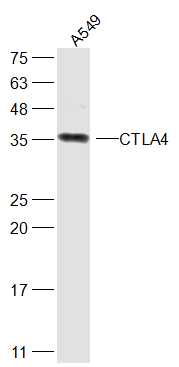
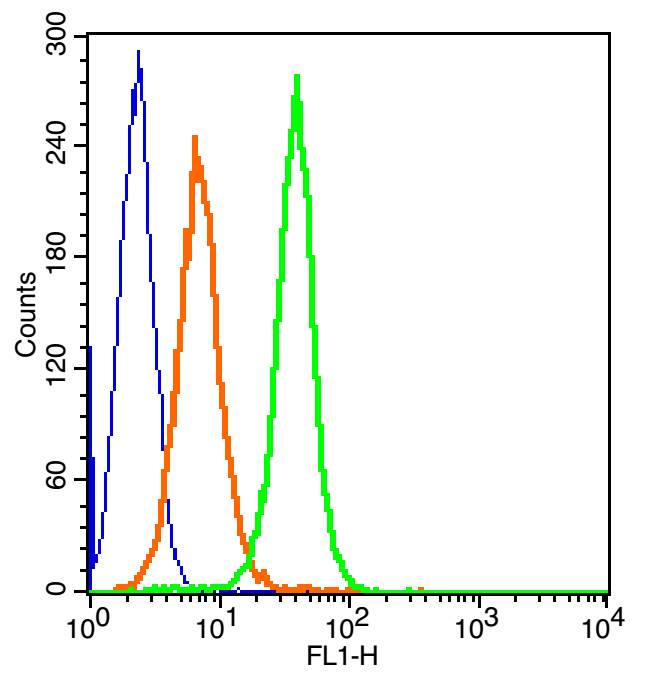
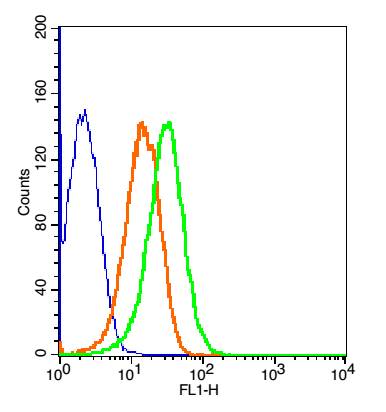
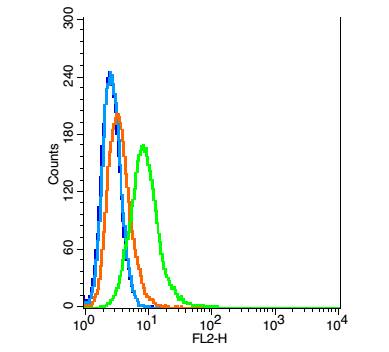
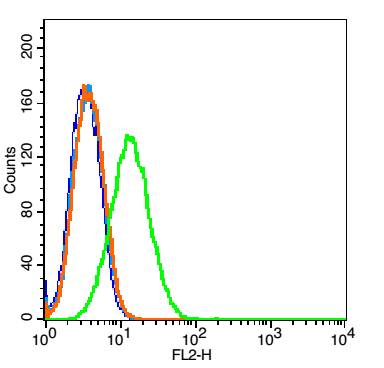


 +86 571 56623320
+86 571 56623320
 +86 18668110335
+86 18668110335

